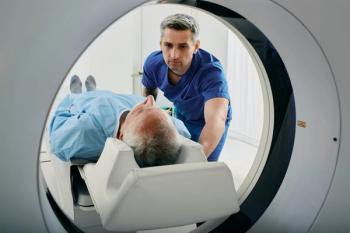Magnetic resonance imaging may help monitor men with prostate cancer who are under active surveillance, according to a study published in the American Journal of Roentgenology. Researchers from Winthrop University Hospital, Mineola, N.Y., performed a study to report the multi-parametric MRI characteristics of prostate cancer patients who discontinued active surveillance after repeat imaging revealed possible evidence of tumor upgrading. Two hundred patients with prostate cancer were being monitored with active surveillance; 114 patients had undergone an initial multi-parametric MRI study before active surveillance started and at least one follow-up multi-parametric MRI study performed after active surveillance began. The MRI findings were evaluated and correlated with pathology results, if available. The results showed that 14 patients discontinued active surveillance because changes on follow-up MRI suggested progression of cancer. Follow-up MRI showed: • Enlarged or more prominent lesion compared with the appearance on a previous MRI in three (21.4 percent) patients;• New lesion or lesions suspicious for cancer in two (14.3 percent) patients; and • Findings suspicious for or confirming extracapsular extension in nine (64.3 patients) patients. Seven of the 14 (50.0 percent) patients had a biopsy after follow-up multi-parametric MRI, and biopsy results led to tumor upgrading in six of the 14 (42.9 percent) patients. The duration of active surveillance ranged from 4 to 110 months. All patients received definitive treatment. The researchers concluded the small number of patients with follow-up multi-parametric MRI findings showing worsening disease supports the role of MRI in patients with early-stage prostate cancer. Multi-parametric MRI is useful in monitoring patients on active surveillance and may identify patients with clinically significant cancer amenable to definitive treatment.




























